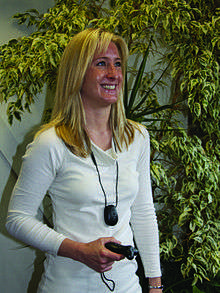Assistive listening device


An Assistive listening device (ALD) is used to improve hearing ability for people in a variety of situations where they are unable to distinguish speech in noise. Often in a noisy or crowded room it is almost impossible for an individual who is hard of hearing to distinguish one voice among many. The hard of hearing listener has to distinguish between background noise, noise between them and the speaker and then there will be the effect of room acoustics on the quality of sound reaching their ears. Hearing aids are able to amplify and process these sounds and improve the speech to noise ratio but if the sound is too distorted by the time it reaches the listener even the best hearing aids will struggle to unscramble the signal.
A common usage is to aid people who are hard of hearing (HOH). by amplification and better sound to noise ratio (SNR). The ALD may be used to help HOH people hear televisions and other audio devices and also to help people hear speech through public address (PA) systems such as in synagogue or at a lecture.
The assistive listening device usually uses a microphone to capture an audio source near to its origin and broadcast it wirelessly over an FM (Frequency Modulation) transmission, IR (Infra Red) transmission, IL (Induction Loop) transmission, or other transmission method. The person who is listening may use an FM/IR/IL Receiver to tune into the signal and listen at his/her preferred volume. There are also other consumer ALD such as alarm clocks with bed shakers, amplified stethoscopes, baby monitors and flashing door bell indicators.[1]
The use of a wireless microphone placed next to the speaker helps to reduce the effects of reverberation from poor room acoustics, bypasses the sounds between the speaker and the listener, eliminates the background noise by the listener, and by using a directional microphone reduces the background noise by the speaker.[2]
See also
| Wikimedia Commons has media related to Assistive listening devices. |